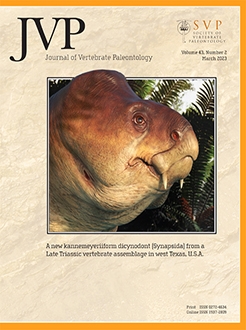Many sauropod dinosaurs exhibit extensive postcranial skeletal pneumaticity that may have facilitated the evolution of extreme body sizes. Among titanosauriforms, complex, irregularly branching camellate chambers are found throughout the presacral vertebral column, often invading the ribs and ilium as well. To explore the function of these camellae, including reduction in bone volume, pneumaticity was examined in a titanosaur sauropod from the Upper Cretaceous Black Peaks Formation of Big Bend National Park, Texas, that includes pneumatic dorsal ribs and ilia. Using natural breaks to non-destructively observe the internal structure, patterns of camellate pneumaticity are described for the dorsal vertebrae, ribs, and ilium. The space occupied by camellae is quantified as the airspace proportion, which is reported here in a sauropod ilium for the first time. Airspace proportions exceed 70% in parts of the dorsal vertebrae and ilium, with lower values near the cotyles of the vertebral centra and the acetabulum. Values in the ribs decrease distally. These values are not appreciably different from those of sauropods with simpler camerate pneumaticity. If camellae did not offer greater weight reduction than camerae, they may have enhanced structural strength, as the chambers appear to align with stress in the vertebral centra and ilium. Apneumatic trabecular bone around the acetabulum, preacetabular process, and postzygapophyses, however, may indicate stresses too great for camellate bone to bear, although an ontogenetic influence cannot be ruled out.
How to translate text using browser tools
11 October 2023
Patterns and Function of Pneumaticity in the Vertebrae, Ribs, and Ilium of a Titanosaur (Dinosauria, Sauropoda) from the Upper Cretaceous of Texas
John A. Fronimos
ACCESS THE FULL ARTICLE





